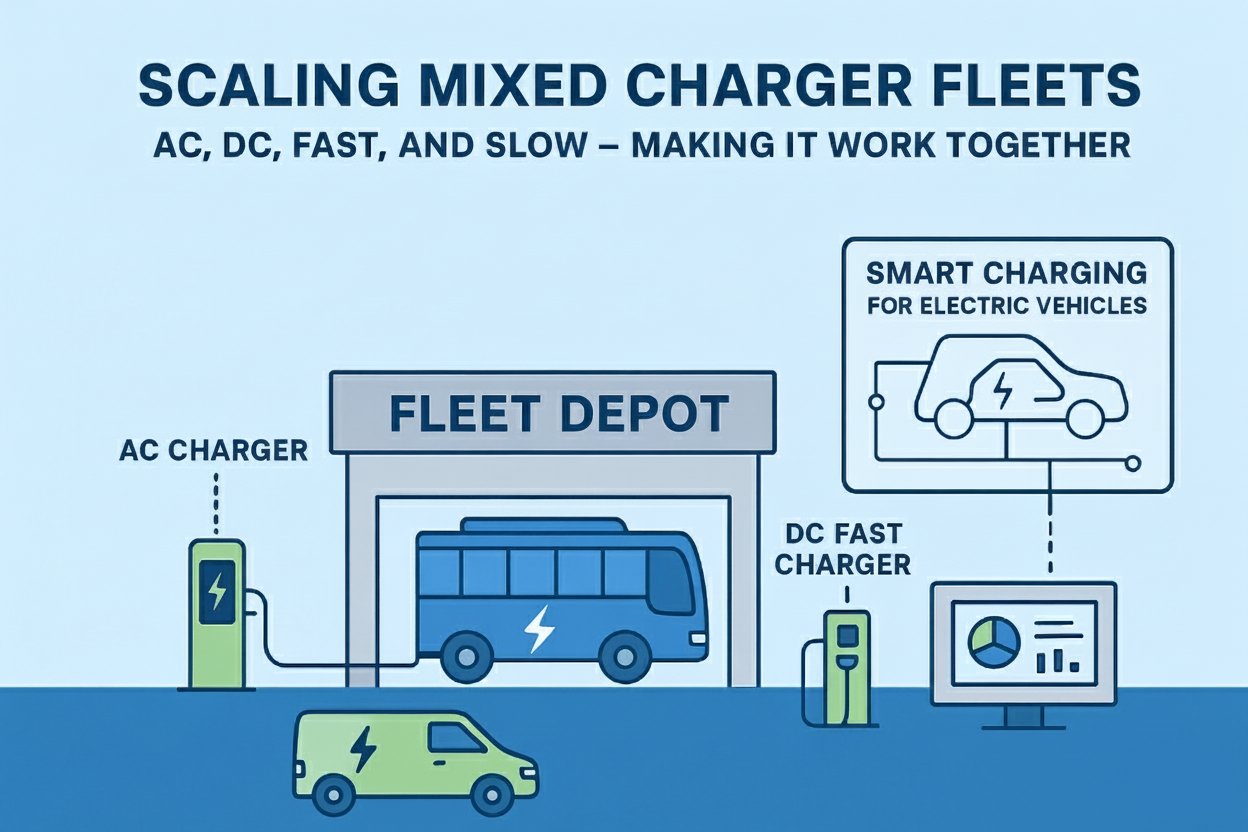

Fleet depots are rarely uniform. A single site might have AC chargers for overnight shifts, DC fast chargers for quick turnarounds, and in the near future, Megawatt Charging Systems (MCS) for heavy-duty vehicles.
The challenge? Each charger speaks a slightly different “language.” Even when they all use OCPP, the implementation details vary by brand and model. That means:
For fleet managers, this can turn day-to-day operations into a complex puzzle.
As electrification scales, very few depots can standardize on just one charger type. Logistics companies, bus depots, and municipal fleets all face the same reality:
Without the right tools, this diversity becomes a bottleneck for efficiency and cost control.
At Bia, we help operators make sense of the chaos. Our EV charging management software ensures that every charger, regardless of brand or type, behaves predictably in one unified system.
We do this by:
The result: onboarding a new project takes hours, not weeks, and mixed depots operate smoothly without manual workarounds.
A real-world fleet might look like this:
This hybrid strategy combines cost-effective infrastructure with high utilization rates, a balance made possible by fleet charging solutions that unify the entire ecosystem.
As the industry moves toward smart electric vehicle charging, the complexity will only increase. Fleets will need to coordinate AC, DC, and MCS chargers while interacting with energy markets and grid services.
That’s why smart charging for electric vehicles is no longer optional. It’s the foundation for scalability, efficiency, and resilience.
With Bia, fleet operators gain:
Whether you’re scaling a delivery fleet or operating a complex bus depot, we help you turn charger diversity into a competitive advantage.
For context, the International Energy Agency highlights smart charging as a cornerstone of global fleet electrification.
✅ Mixed fleets with AC, DC, and future high-power chargers are here to stay. With the right EV charging software and smart charging system, operators can simplify complexity, cut costs, and ensure every vehicle is ready when it’s needed.